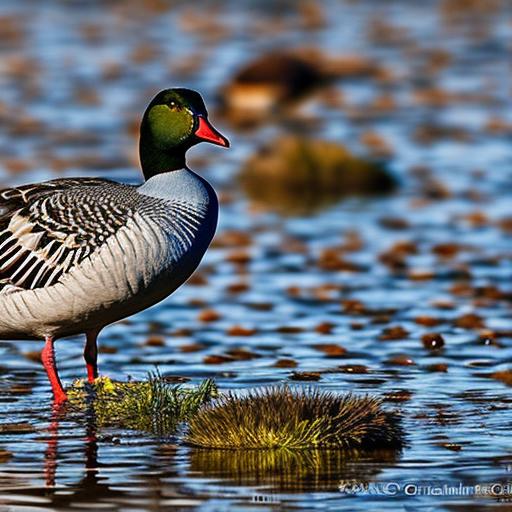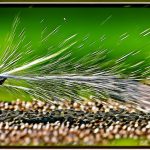Geese infestation is a common problem in many areas, causing damage to property, creating unsightly messes, and posing health risks. It is important to implement effective control measures to prevent geese from becoming a nuisance. In this post, we will discuss various methods that can be used to control geese infestation, including physical barriers, decoys, bird spikes, repellents, creating a hostile environment, using sound and light devices, maintaining a clean environment, and seeking professional help.
Key Takeaways
- Wild geese are social animals that travel in flocks and communicate with each other through honking.
- Geese infestations can be caused by the availability of food, water, and shelter in an area.
- Physical barriers such as fences and netting can be effective in keeping geese away from certain areas.
- Decoys that resemble predators or other geese can deter geese from landing in an area.
- Bird spikes can be installed on surfaces to prevent geese from roosting and leaving droppings.
Understanding the behavior of wild geese
To effectively control geese infestation, it is important to understand the behavior of wild geese. Geese are migratory birds that follow specific patterns during their annual migration. They typically nest in areas near bodies of water and prefer open spaces with short grass for feeding. Understanding their nesting habits and migratory patterns can help in implementing effective control measures.
Geese infestation occurs when these birds find suitable nesting and feeding grounds in urban or suburban areas. They are attracted to areas with open spaces, water sources, and abundant food supply. Their nesting habits also contribute to the problem, as they tend to return to the same nesting sites year after year. This makes it important to address the reasons why geese are attracted to certain areas in order to prevent infestation.
Identifying the reasons for geese infestation
There are several common reasons why geese are attracted to certain areas. These include the availability of open spaces with short grass for feeding, access to water sources such as ponds or lakes, and the presence of abundant food supply such as grass or crops. Geese are also attracted to areas where they feel safe from predators.
To prevent geese infestation, it is important to address these reasons. This can be done by implementing measures such as reducing the availability of open spaces for feeding by maintaining longer grass or using physical barriers, limiting access to water sources through the use of fencing or other barriers, and reducing the availability of food supply by removing or covering crops.
Implementing physical barriers to keep geese away
One effective method of controlling geese infestation is by implementing physical barriers. There are different types of physical barriers that can be used to keep geese away. These include fences, netting, and floating barriers.
Fences can be used to create a physical barrier between geese and the area you want to protect. They should be at least 3 feet high and have small openings to prevent geese from squeezing through. Netting can be used to cover areas such as ponds or crops to prevent geese from accessing them. Floating barriers can be placed in bodies of water to create a barrier that prevents geese from landing.
It is important to properly install and maintain these barriers to ensure their effectiveness. Fences should be securely anchored to the ground and checked regularly for any damage or gaps. Netting should be properly secured and checked for any tears or holes. Floating barriers should be regularly inspected and adjusted as needed.
Using decoys to deter geese from landing
Decoys can be an effective method of deterring geese from landing in an area. Decoys work by mimicking the appearance of geese and creating the illusion of a populated area, which makes geese feel unsafe and less likely to land.
There are different types of decoys that can be used, including stationary decoys, motion decoys, and predator decoys. Stationary decoys are placed in an area to create the appearance of a flock of geese. Motion decoys have moving parts that simulate the movement of geese, making them more realistic. Predator decoys mimic the appearance of natural predators such as coyotes or foxes, which scares geese away.
To use decoys effectively, it is important to place them in areas where geese are likely to land or gather. They should be regularly moved and rearranged to create the appearance of a dynamic flock. Decoys should also be cleaned regularly to maintain their effectiveness.
Installing bird spikes to prevent geese from roosting

Bird spikes can be used to prevent geese from roosting in an area. Bird spikes are long, thin rods with pointed ends that are installed on surfaces where geese are likely to roost, such as ledges or rooftops. The pointed ends make it uncomfortable for geese to land or perch on these surfaces, discouraging them from staying in the area.
There are different types of bird spikes available, including plastic spikes and stainless steel spikes. Plastic spikes are more affordable and easier to install, but they may need to be replaced more frequently. Stainless steel spikes are more durable and long-lasting, but they can be more expensive.
To install bird spikes properly, they should be placed in areas where geese are likely to roost or perch. They should be securely attached to the surface using adhesive or screws. It is important to regularly inspect and maintain bird spikes to ensure their effectiveness.
Applying repellents to keep geese at bay
Repellents can be used to keep geese away from an area by creating an unpleasant environment for them. There are different types of repellents that can be used, including visual repellents, auditory repellents, and taste repellents.
Visual repellents use visual cues such as reflective surfaces or scare devices to deter geese from landing or staying in an area. Auditory repellents use sound devices that emit loud noises or predator calls to scare geese away. Taste repellents use substances that taste unpleasant to geese and discourage them from feeding in an area.
To apply repellents effectively, it is important to follow the manufacturer’s instructions and guidelines. Visual repellents should be placed in areas where geese are likely to land or gather. Auditory repellents should be placed in areas where geese are likely to be disturbed by the noise. Taste repellents should be applied to surfaces or plants that geese are likely to feed on.
Creating a hostile environment for geese
Creating a hostile environment for geese can help in preventing infestation. This can be done by implementing landscaping techniques and other measures that make an area less attractive to geese.
One way to create a hostile environment is by planting tall grasses or shrubs that make it difficult for geese to access open spaces for feeding. Another way is by using landscaping features such as rocks or gravel that make it uncomfortable for geese to walk or land. It is also important to remove or cover any potential food sources such as crops or grass.
Regular maintenance of the area is also important in creating a hostile environment for geese. This includes removing any standing water that can attract geese, cleaning up any food scraps or waste that can serve as a food source, and regularly inspecting and repairing any potential nesting sites.
Using sound and light devices to scare geese off
Sound and light devices can be used to scare geese off and prevent them from landing in an area. These devices work by emitting loud noises or flashing lights that startle and scare geese away.
There are different types of sound and light devices available, including motion-activated devices, ultrasonic devices, and laser devices. Motion-activated devices detect the movement of geese and emit loud noises or flashing lights to scare them away. Ultrasonic devices emit high-frequency sounds that are unpleasant to geese. Laser devices emit laser beams that create a visual deterrent for geese.
To use sound and light devices effectively, it is important to place them in areas where geese are likely to land or gather. They should be regularly moved and adjusted to prevent geese from becoming accustomed to the deterrent. It is also important to follow the manufacturer’s instructions and guidelines for proper use and maintenance of these devices.
Maintaining a clean and tidy environment to discourage geese
Maintaining a clean and tidy environment can help in discouraging geese from staying in an area. Geese are attracted to areas with abundant food supply, so it is important to remove or cover any potential food sources such as crops or grass. It is also important to regularly clean up any food scraps or waste that can serve as a food source for geese.
Regular maintenance of the area is also important in discouraging geese. This includes removing any standing water that can attract geese, cleaning up any debris or clutter that can provide hiding places for geese, and regularly inspecting and repairing any potential nesting sites.
Regularly mowing the grass and maintaining a longer grass height can also discourage geese from staying in an area. Geese prefer open spaces with short grass for feeding, so maintaining longer grass can make an area less attractive to them.
Seeking professional help for geese control
In some cases, it may be necessary to seek professional help for geese control. Professional wildlife control companies have the expertise and experience in dealing with geese infestation and can provide effective solutions.
When seeking professional help, it is important to find a reputable company that specializes in wildlife control. They should have the necessary licenses and certifications, as well as a track record of successful geese control projects. It is also important to discuss your specific needs and concerns with the company to ensure that they can provide the appropriate solutions.
Professional geese control services may include methods such as trapping and relocation, habitat modification, or hazing techniques. They may also provide ongoing maintenance services to ensure that the area remains free from geese infestation.
Geese infestation can be a nuisance, causing damage to property and posing health risks. It is important to implement effective control measures to prevent geese from becoming a problem. In this post, we discussed various methods that can be used to control geese infestation, including physical barriers, decoys, bird spikes, repellents, creating a hostile environment, using sound and light devices, maintaining a clean environment, and seeking professional help. By taking action and implementing these methods, you can prevent geese infestation in your area and enjoy a goose-free environment.
If you’re looking for ways to keep wild geese away from your property, you may also be interested in learning about how to build an effective chicken coop. A well-designed chicken coop can not only provide a safe and comfortable home for your chickens but also help deter unwanted visitors like geese. Check out this informative article on poultrywizard.com that discusses the benefits of an A-frame chicken coop design: https://poultrywizard.com/keeping-chickens/a-frame-chicken-coop/. Additionally, you might want to explore the importance of chicken coop door size and interior ideas to further enhance the security and functionality of your coop. Find out more at: https://poultrywizard.com/keeping-chickens/chicken-coop-door-size/ and https://poultrywizard.com/keeping-chickens/chicken-coop-interior-ideas/.
FAQs
What are some effective ways to keep wild geese away?
Some effective ways to keep wild geese away include using decoys, installing fencing or netting, using noise deterrents, and removing food sources.
Why is it important to keep wild geese away?
Wild geese can cause damage to property, create health hazards with their droppings, and pose a threat to aviation safety.
What are some natural deterrents for wild geese?
Some natural deterrents for wild geese include planting certain types of vegetation, using dogs to patrol the area, and using reflective surfaces to create a visual deterrent.
Is it legal to harm or kill wild geese?
In most cases, it is illegal to harm or kill wild geese without a permit. It is important to check with local wildlife authorities before taking any action.
How can I prevent wild geese from nesting on my property?
Preventing wild geese from nesting on your property can be done by removing any potential nesting sites, such as tall grass or brush, and using visual or noise deterrents to discourage geese from settling in the area.
Meet Walter, the feathered-friend fanatic of Florida! Nestled in the sunshine state, Walter struts through life with his feathered companions, clucking his way to happiness. With a coop that’s fancier than a five-star hotel, he’s the Don Juan of the chicken world. When he’s not teaching his hens to do the cha-cha, you’ll find him in a heated debate with his prized rooster, Sir Clucks-a-Lot. Walter’s poultry passion is no yolk; he’s the sunny-side-up guy you never knew you needed in your flock of friends!







